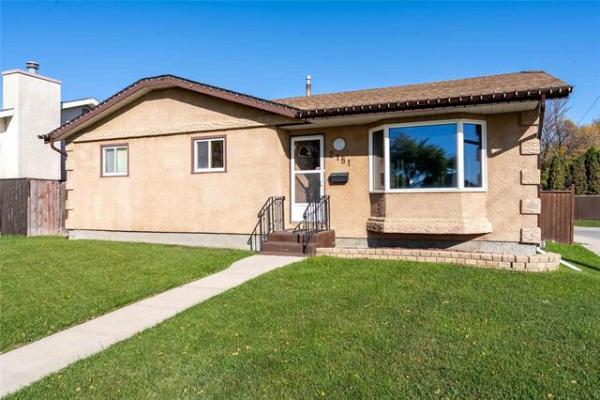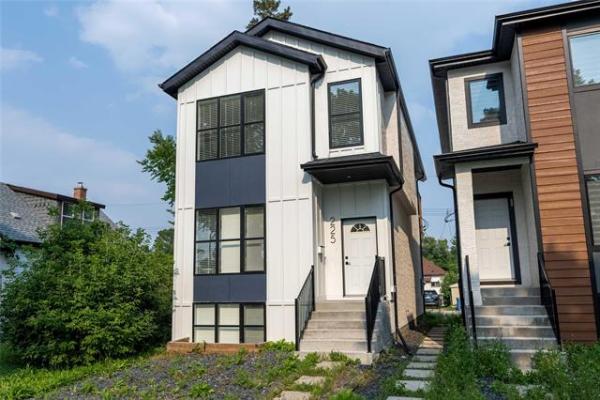QUESTION: We are in a six-year-old home in Richmond West. This house has two beams and is a cab-over design, so telepost adjustment may present problems. The doorway leading to the master bedroom in the cab-over has been sticking in the winter. I have recently replaced this door with a solid-core door for a few reasons -- sound being one, and the ability to shave off and trim the door if needed.
Our basement is completely finished, and my concern is that as soon as a contractor sees this, assuming I can find one, he will only want to do the adjustment once, and I won't do it that way. Of course, we now have some drywall cracking as well.
I wonder if you had any feedback from customers or contractors who have dealt with this problem in the correct way by doing a slow adjustment. The average homeowner doesn't even know what kind of contractor to hire, and I am certainly one of them.
Susan Maxwell, email
I read an article you wrote in the Free Press on how to adjust teleposts. We live in River Heights and we have a bungalow that has two teleposts. When we moved in back in 1995, the house had already shifted and is lower on the right-hand side. We never had the teleposts adjusted. It did not really bother me, but now I feel that I should look at adjusting the teleposts as it bothers me when we open our cabinet doors and they stay open. Our basement is undergoing renovations and is not yet finished. I was thinking this would be a good time to revisit the teleposts.
When is the best time to adjust the posts and how many times during the year? What would happen to the base where the concrete and the frame of the house meet when I adjust the teleposts?
John Ticzon, email
I bought a 28-year-old house in Winnipeg and recently moved in. I did a pre-purchase home inspection. There are two doors that cannot be properly closed and the home inspector told me I probably have to adjust the teleposts.
I am new to Canada and I wanted to know whether this is big job and who can do this for me.
Mahinda Jayaratne
ANSWER: All of your questions pertain to the normal, yet frequently misunderstood, need for telepost adjustment in your homes. The common thread in all three inquiries is the difficulty finding proper contractors to do the job. I will address that pressing question and the others, as well.
As pointed out in the first question, it can be difficult to find contractors willing to do multiple, slow adjustments of teleposts to minimize cracking and structural movement in the home. The more gradual the adjustment, the less the chance of major cracking in the walls and increased squeakiness in the floors.
If adjustments are done no more than a quarter to half a revolution at a time, several days or weeks apart, the house will be more prone to slowly adapt to the movement. If posts are lowered even fractions of an inch or more in one fell swoop, cracking walls are a certainty. As to the second inquiry, there should be no damage or negative effect of lowering teleposts on the floor structure over top of the perimeter foundation, as long as one thing is taken into consideration. The interior partition walls must not be installed tight between the concrete floor slab and the underside of the floor framing prior to adjustments. A slip joint or substantial space must exist between these two components, or damage may occur to the floor structure during telepost adjustments.
This can occur because most teleposts require lowering, which may allow the partition walls to improperly assume the support of these posts if they don't have enough space at the top or bottom. In that case, new floor bumps may occur, teleposts may become loose and, in rare cases, differential movement and damage can occur over top of the foundation walls. If your basement walls are not currently "floating," this can be easily remedied by cutting the existing framing to allow for future telepost adjustments.
These repairs and adjustments can be done at any time of the year, but should be avoided in the early spring or late fall if possible. At those two times of the year, the freezing and thawing of the soil and daily temperature fluctuations above and below the freezing point may cause the basement floor slab and footings to move, making telepost adjustments more difficult.
The final and most important part of all your inquiries is finding the best person to hire for this important maintenance issue. If your basement is mostly unfinished, or you are certain that all basement walls are sufficiently floating to allow adjustments, you may want to call a reputable foundation contractor for the repairs. Some of these foundation repair experts will come in several times to do periodic adjustment, but don't hire a contractor that tells you the adjustments can all be done in a matter of hours, rather than months.
If there are walls that need to be cut down, or the telepost adjustment areas are covered, enlisting the services of a good general contractor will be your best bet. An experienced contractor should have sufficient knowledge of the proper amount and rate of telepost adjustments necessary to achieve a relatively straight floor system without major damage to the walls or floorboards.
Ari Marantz is the owner of Trained Eye Home Inspection Ltd. and the President of the Canadian Association of Home & Property Inspectors - Manitoba (www.cahpi.mb.ca). Questions can be emailed or sent to: Ask The Inspector, P. O. Box 69021, #110-2025 Corydon Ave., Winnipeg, MB. R3P 2G9. Ari can be reached at (204) 291-5358 or check out his website at www.trainedeye.ca.
trainedeye@iname.com



